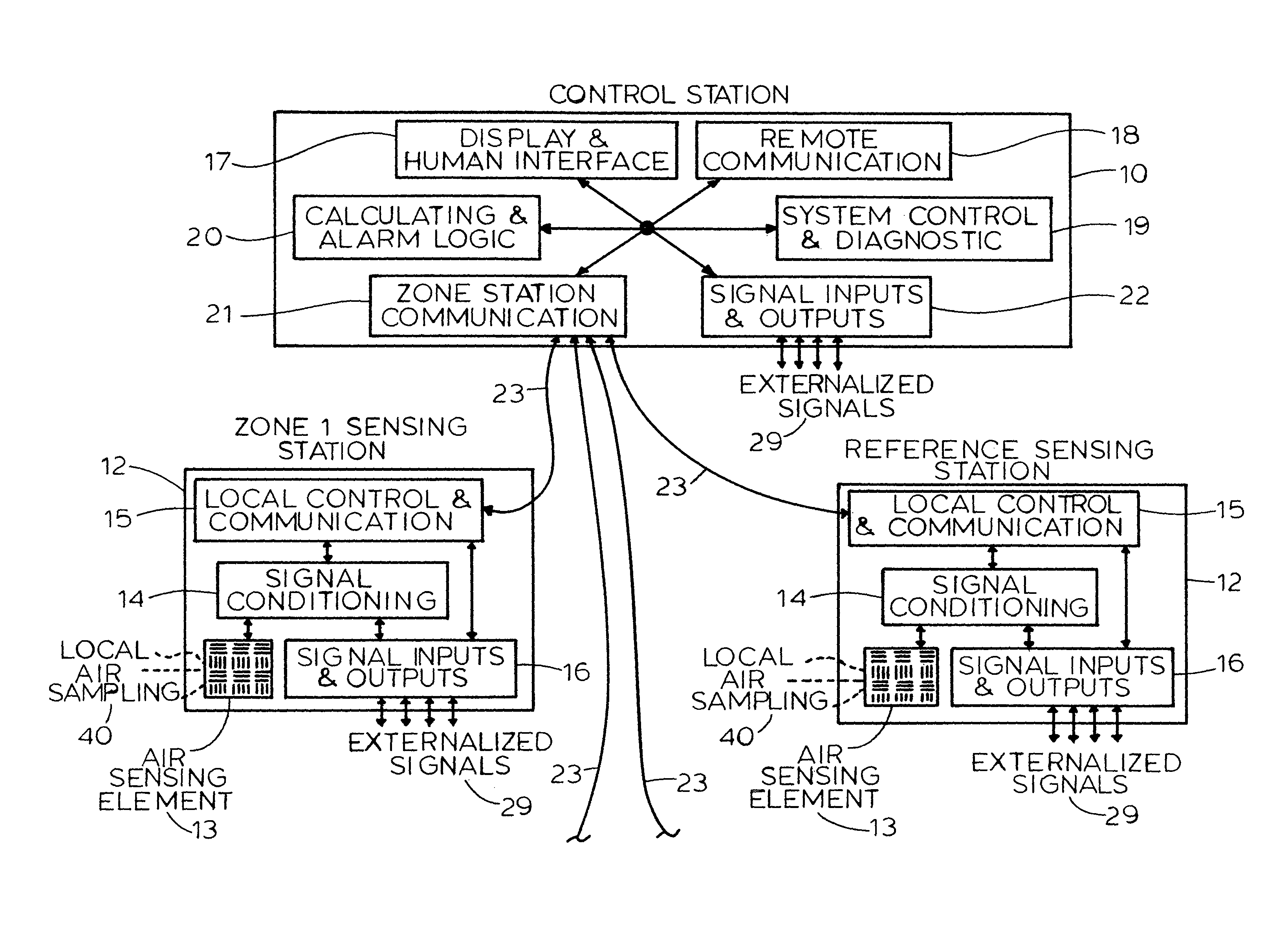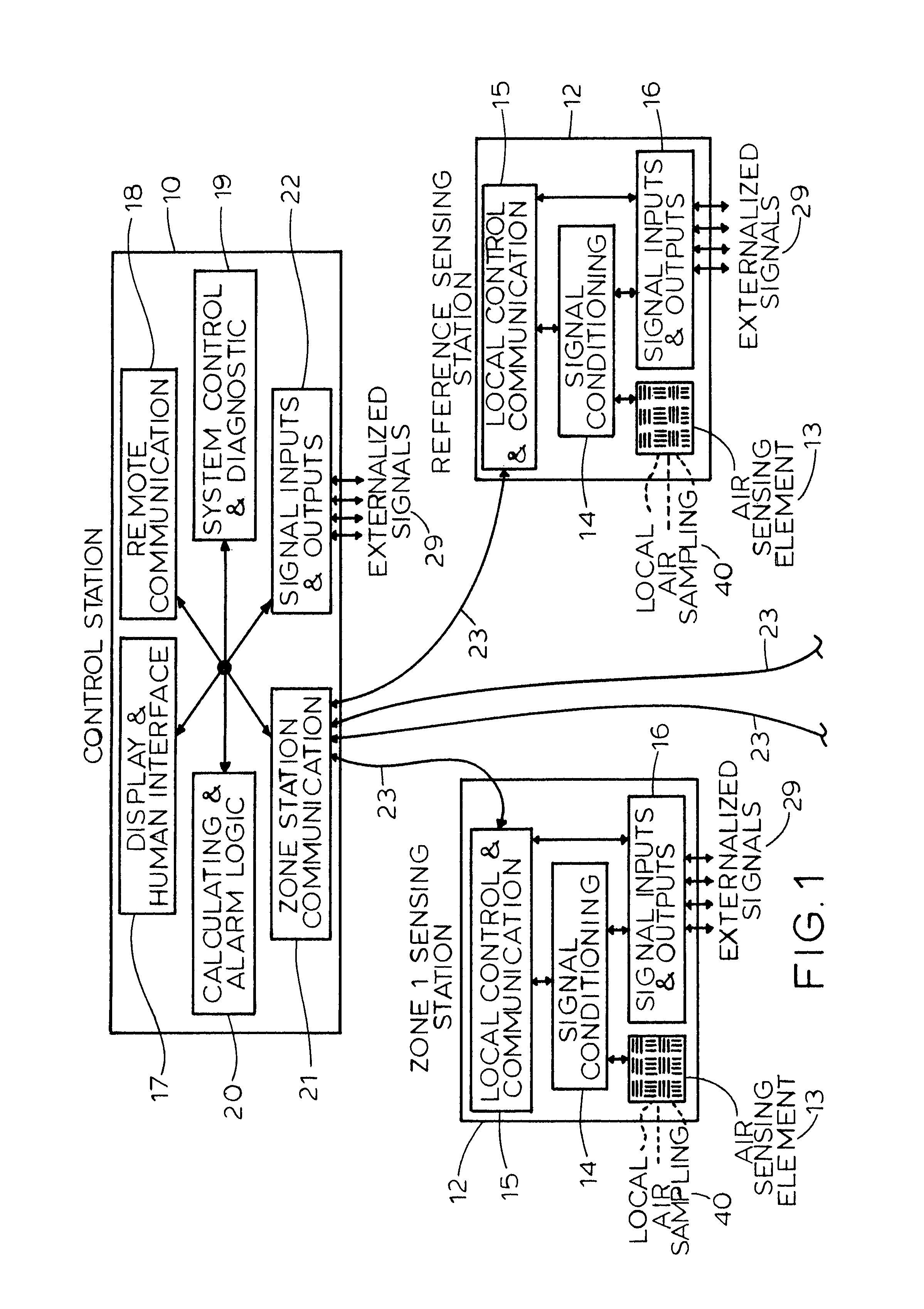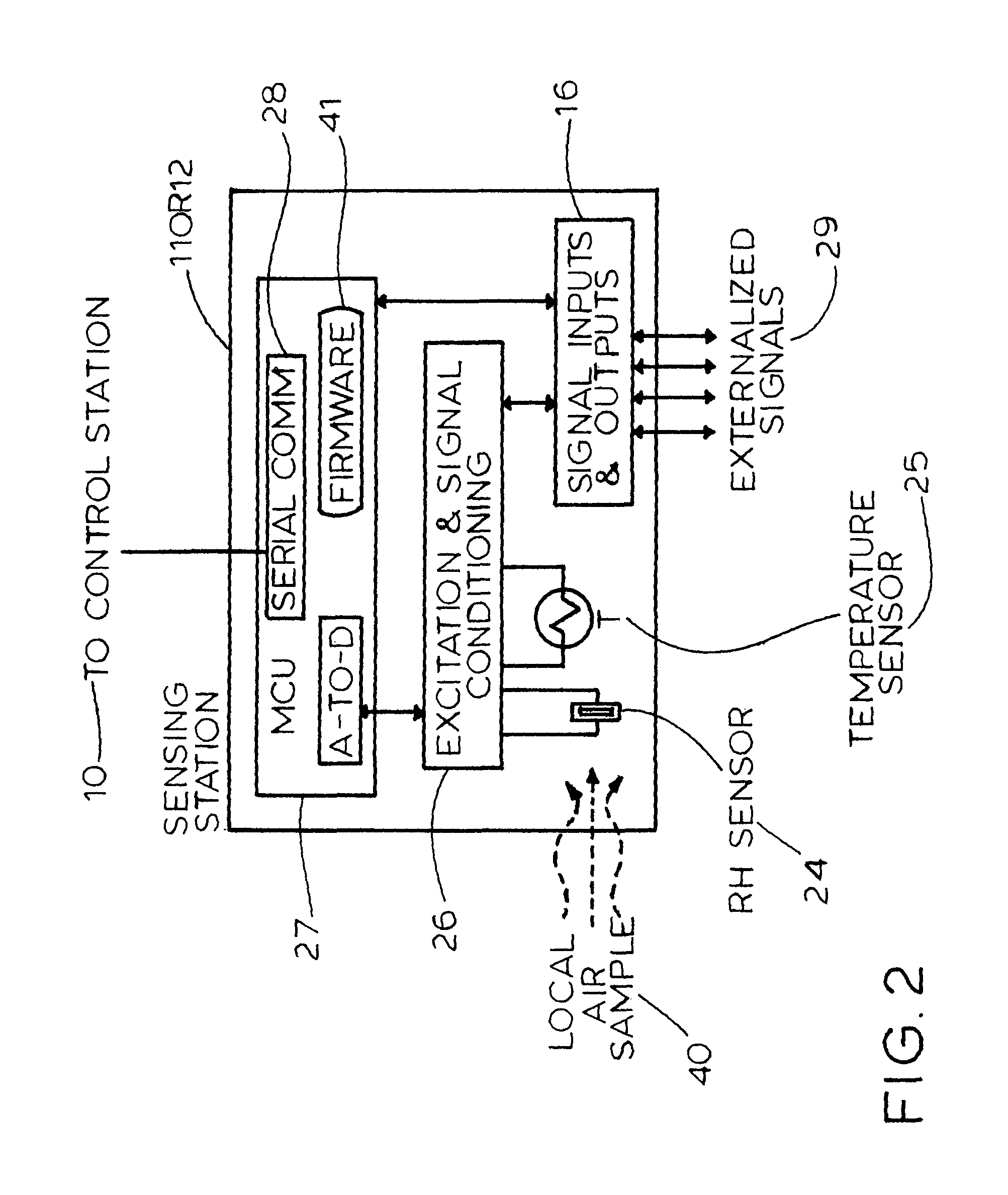Humidity monitoring and alarm system for unattended detection of building moisture management problems
a technology for building moisture management and alarm systems, applied in the field of building and structure sciences, can solve problems such as affecting the repair process of buildings, and corresponding increase in negative effects on buildings, so as to reduce the cost and severity of building repairs, suppress false alarms, and avoid high moisture situations
- Summary
- Abstract
- Description
- Claims
- Application Information
AI Technical Summary
Benefits of technology
Problems solved by technology
Method used
Image
Examples
Embodiment Construction
[0081]Airborne humidity monitoring provides a direct measurement of the moisture content of the air, effectively the moisture mass that is available to the building environment. In most cases, this measurement will be very responsive to changes caused by a significant moisture source within or adjacent to the building's conditioned envelope.
[0082]This invention is based on the psychrometric principles governing the behavior of moisture in air and other materials. Abnormal or undesirable humidity behavior may indicate that a moisture management problem exists. Problems could relate to water leakage, changes in ventilation, dehumidification or air conditioning system performance, building operation or occupancy issues.
[0083]The invention described herein utilizes a combination of humidity and temperature monitoring points to assess the prevailing moisture conditions and trends in various conditioned building spaces and zones. Humidity may be optionally measured through absolute or rel...
PUM
 Login to View More
Login to View More Abstract
Description
Claims
Application Information
 Login to View More
Login to View More - R&D
- Intellectual Property
- Life Sciences
- Materials
- Tech Scout
- Unparalleled Data Quality
- Higher Quality Content
- 60% Fewer Hallucinations
Browse by: Latest US Patents, China's latest patents, Technical Efficacy Thesaurus, Application Domain, Technology Topic, Popular Technical Reports.
© 2025 PatSnap. All rights reserved.Legal|Privacy policy|Modern Slavery Act Transparency Statement|Sitemap|About US| Contact US: help@patsnap.com



